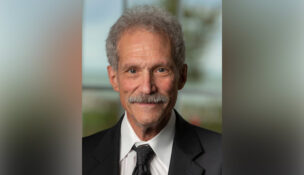Meeting the challenge to Wisconsin’s criminal jury instruction 140
By: Bridgetower Media Newswires//November 22, 2017//
Meeting the challenge to Wisconsin’s criminal jury instruction 140
By: Bridgetower Media Newswires//November 22, 2017//

Kenosha County criminal defense attorney Michael Cicchini is on a quest to revise what he considers Wisconsin’s deeply flawed jury instruction concerning the presumption of innocence and the burden of proof. Citing a non-peer reviewed study conducted by Cicchinni himself and Lawrence Wright, a professor at Beloit College, he has filed motions throughout the state arguing that one line of text in Wis JI 140 makes it twice as likely for jurors to convict defendants. The offending language, as Cicchinni sees it: “You are not to search for doubt; you are to search for the truth.”[1]
A second non-peer reviewed study, also by Cicchini and Wright, purportedly shows that the text they are objecting to reduces the state’s burden of proof from beyond a reasonable doubt to the preponderance standard. The result, the authors claim, is the doubled conviction rate.[2]
It is – well – reasonable to doubt Cicchini’s claims. Jurors in a criminal trial are repeatedly instructed not to convict unless the state has proved guilt beyond a reasonable doubt. The admonition is given when charges are announced[3], after the enumeration of each element of a charged offense[4], immediately preceding the text Cicchini objects to[5], and in various additional instructions, depending upon the evidence admitted at trial.[6] Reminders to jurors about the state’s heavy burden are, as they should be, virtually a refrain.
Faced with a similar challenge to Wis JI 140 in State v. Avila, 192 Wis. 2d 870 (1995), the Wisconsin Supreme Court held that “the instruction as a whole emphasizes with great clarity that the State bears the burden of proving the defendant’s guilt beyond a reasonable doubt and that a defendant is presumed innocent until that burden is met.” Avila at 890. Other courts have found permissible even more explicit “seek the truth” language, including the text at issue in United States v. Gonzalez-Balderas, 11 F.3d 1218, (5th Cir. 1994), a case cited by Cicchini in support of his motion. Noting that the entirety of the instructions clearly defined the government’s burden of proof, the court concluded that the challenged language – “Your sole interest is to seek the truth from the evidence in this case.” – had not diluted the beyond-a-reasonable-doubt standard. Gonzalez-Balderas at 1223
Cicchini’s argument runs counter to a bedrock principle of law—that along with safeguarding a defendant’s due-process right to a fair trial, a chief aim of a trial is to search for the truth. The supreme court has long held the same, writing for instance in State v. Manna, 179 Wis. 384 (1923) that “it is undoubtedly true that the aim of the jury should be to ascertain truth.” Or again, more recently, in State v. McClaren, 318 Wis.2d 739, 767 N.W.2d 550: “Ascertainment of the truth is the primary objective of a trial.” McClaren at 745.
What, then, explains Cicchini’s objection to this long-standing, fundamental, and not-so-radical notion that jurors ought to search for the truth to the extent it can be found in a particular set of facts?
Underlying his argument is a broader outlook revealed in his response to a column I wrote a few months ago about the Steven Avery case.[7] “Unlike prosecutors,” Cicchini writes despite being the author of a book about the case professing certainty that Mr. Avery was framed,[8] “I don’t pretend to ‘know’ what really happened in the Avery case.”[9]
His position echoes an enduring theme championed by the documentarians behind the widely acclaimed Netflix series, “Making a Murderer,” who have repeatedly feigned ignorance about Avery’s guilt or innocence despite producing a ten-part documentary all but convicting the police of planting evidence to wrongly convict him a second time. Claiming it’s impossible to know whether Avery committed the murder, the film makers are dismissive of anyone who suggests otherwise, all the while distorting the facts to fit their pre-ordained conclusion. “Highbrow vigilante justice,” the New Yorker columnist Kathryn Schulz aptly deemed the series. [10]
“The story that we were telling didn’t depend on his guilt or innocence,” explained one of the documentarians, “it was really to witness and ask questions and explore.”[11]
“What I learned from making this series is the humility to accept that I don’t know, and I may never know,” said the other. “If you’re so committed to finding the truth and finding the answer, it’s very hard to be comfortable with ambiguity and you’ll often settle, just for some finality.”[12]
To be sure, there are cases in which a defendant’s guilt cannot be known with the level of certainty needed to warrant a conviction, or even the bringing of charges—but the Avery case isn’t one of them. Those who pretend it is, no matter how well-intentioned their aim of drawing attention to the flaws of the criminal-justice system, have abandoned some of the very principles they profess to hold dear. Just ask the expanding list of alternate suspects who find themselves on the receiving end of Mr. Avery’s current lawyer’s accusatory finger without a shred of reliable evidence backing her claims.
Footnotes
[1] Michael D. Cicchini & Lawrence T. White, Truth or Doubt? An Empirical Test of Criminal Jury Instructions, 50 U. Richmond L. Rev. 1139, 1143 (2016).
[2] Michael D. Cicchini & Lawrence T. White, Testing the Impact of Criminal Jury Instructions on Verdicts: A Conceptual Replication, 117 Columbia L. Rev. Online 22, 30-31 (2017).
[3] Wis JI 115.
[4] See, for example Wis JI 1010: First Degree Intentional Homicide.
[5] Wis JI 140: Burden Of Proof and Presumption of Innocence.
[6] See, for example Wis JI 800: Self-defense; 170: Circumstantial Evidence; 141: Where Identification of Defendant is in Issue; 600: Lesser Included Offense.
[7] Michael Griesbach, Column: Kathleen Zellner out for fortune, fame in Steven Avery case, Post-Crescent (June 23, 2017).
[8] Convicting Avery: The Bizarre Laws and Broken System behind “Making a Murderer,” Michael Cicchini (April 2017).
[9] Michael D. Cicchini, Critics Corner: ‘Mistakes were made’: A reply to Michael Griesbach, Wisconsin Law Journal (June 26, 2017).
[10] Kathryn Schulz, Dead Certainty, How “Making a Murderer” Goes Wrong, New Yorker (Jan 25, 2016).
[11] ‘Making a Murderer’s Laura Ricciardi And Moira Demos: “We Certainly Didn’t Leave Out Anything Of Real Significance,” Deadline Hollywood, Antonia Blyth (August 23, 2016).
[12] How We Made ‘Making a Murderer’: Filmmakers Moira Demos and Laura Ricciardi Pull Back the Curtain, Daily Beast, Jen Yamato (January 3, 2016).
Legal News
- Wisconsin joins Feds, dozens of states to hold airlines accountable for bad behavior
- Trump ahead of Biden in new Marquette poll
- Bankruptcy court approves Milwaukee Marriott Downtown ‘business as usual’ motion
- New Crime Gun Intelligence Center to launch in Chicago
- Arrest warrant proposed for Minocqua Brewing owner who filed Lawsuit against Town of Minocqua
- Wisconsin Supreme Court justices question how much power Legislature should have
- Reinhart named the 2024 Wisconsin law firm of the year by benchmark litigation
- Milwaukee’s Common Council now has the most African Americans, women and openly LGBTQ members ever
- Office of School Safety Provides Behavioral and Threat Assessment Management Training Ahead of 25th Anniversary of Columbine Shooting
- Wisconsin Supreme Court to hear arguments in Democratic governor’s suit against GOP-led Legislature
- Lawsuit asks Wisconsin Supreme Court to strike down governor’s 400-year veto
- Wisconsin man pleads not guilty to neglect in disappearance of boy
WLJ People
- Power 30 Personal Injury Attorneys – Russell Nicolet
- Power 30 Personal Injury Attorneys – Benjamin Nicolet
- Power 30 Personal Injury Attorneys – Dustin T. Woehl
- Power 30 Personal Injury Attorneys – Katherine Metzger
- Power 30 Personal Injury Attorneys – Joseph Ryan
- Power 30 Personal Injury Attorneys – James M. Ryan
- Power 30 Personal Injury Attorneys – Dana Wachs
- Power 30 Personal Injury Attorneys – Mark L. Thomsen
- Power 30 Personal Injury Attorneys – Matthew Lein
- Power 30 Personal Injury Attorneys – Jeffrey A. Pitman
- Power 30 Personal Injury Attorneys – William Pemberton
- Power 30 Personal Injury Attorneys – Howard S. Sicula











